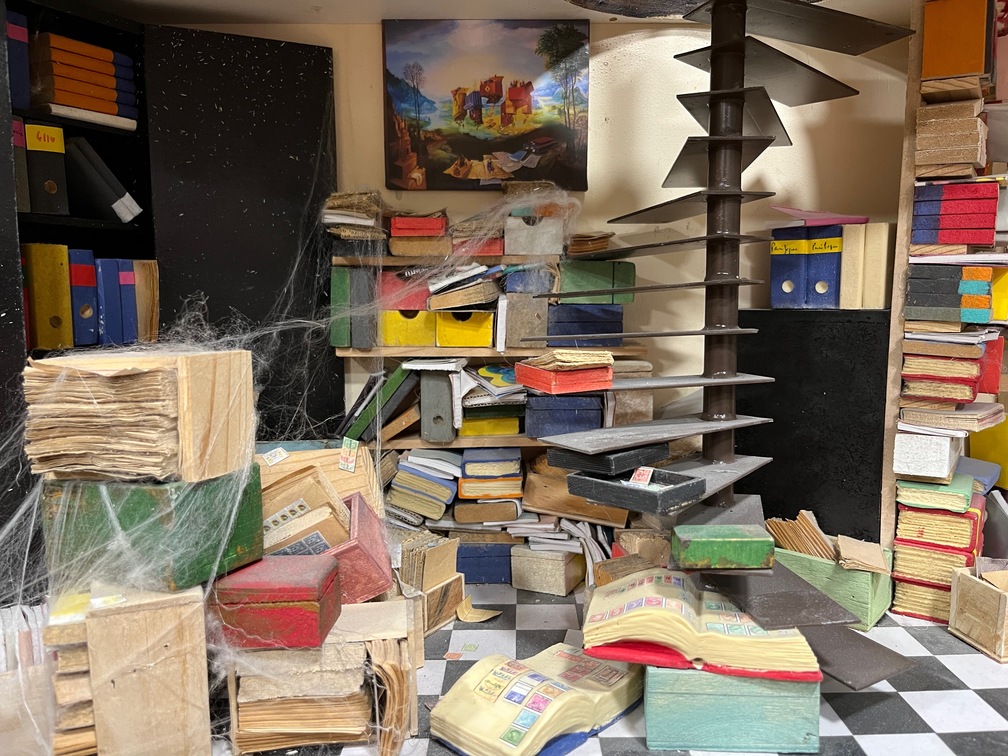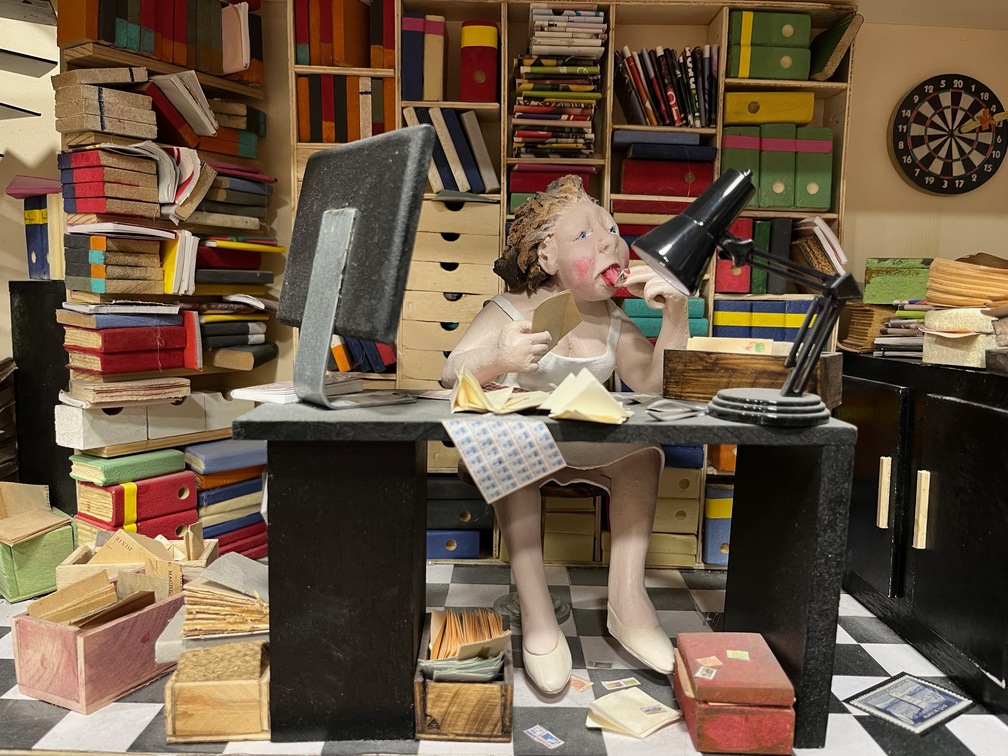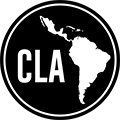
Peter Moorer is on a mission.
To create a single search tool that can enable Latin American collectors to have digital access to any article, journal, catalogue or publication ever produced on Central and South American philately. And to include links to videos, websites and, well, absolutely anything out there that can help with your philatelic research.
It’s a tall order. But huge progress has already been made. In this article we discuss the background to the venture and the challenges of building One Database To Rule Them All – Moorer’s Interactive Index.
CLA What inspired you to create a universal look-up tool for Latin American philately?
PM Up until 2021 I worked at the university of Groningen in The Netherlands writing scientific articles. To help write these articles, I would use ‘reference manager programs’ which help to create bibliographies according to the style of major scientific journals.
After my tenure I lost access to these programs and so I looked for an open-access alternative. I came across the Zotero platform and started by adding my own scientific holdings.
I then decided to use the platform to add my own philatelic books and then the holdings of Al Barid (the Dutch Middle East Philatelic Society).
This got me hooked and I started to look for other resources to add. A real gamechanger was finding free access to the journals of the Collector’s Club of New York. After adding those I also found free access to books and journals from the philatelic societies of Peru, Chile, Ecuador and Uruguay.
After that, there was no stopping me!
Comparisons with other research tools
CLA Doesn’t this just duplicate other online look-up tools such as The Global Philatelic Library?
PM Partially – but its scope is much wider. The Global Philatelic Library refers only to their own holdings. It does not, for example, index online videos.
I will add everything I can whether I own the material or not. This includes over 500 videos from ‘Mi Oficina’s’ YouTube channel plus other Latin American video sources such as the videos produced by The International Collector’s Society for Guatemala.
I also add any reference to Latin American philately as long as I have sufficient information on the book, articles, website, video or presentation. I use more keywords than The Global Philatelic Library to index the references, making sources easier to find.
So far, I have added 3000 different keywords. About one third of these are keywords for individual countries or areas.
I also adhere to the strict format of bibliographic referencing used by scientific journals. This avoids mixing up the title with page numbers, volume numbers or issues for a particular journal article.
CLA What are the key challenges in creating a database of this nature?
PM There are two key challenges:
Firstly, finding and getting access to references or resources. For instance, some American Universities have digitized classic philatelic journals such as ‘The Philatelic Gazette’ (1910-1918) but they are not downloadable in full for collectors outside the USA.
Money also becomes an issue as I cannot pay for all the different fees for member-only organisations. For instance, membership to the RPSL (and access to the London Philatelist) is higher than the combined fees for all ten societies I am a member of!
Secondly, the need to stay consistent and frugal when applying keywords and tags. For example, I could use ‘Brasil’, ‘Brazil’ or ‘Brasilien’ (German). To make searching easier, I only use Anglo-American and have therefore opted to use ‘Brasil’ in this case (as it is closest to the Portuguese-Brazilian name).
As a Dutchman, I can also easily mix up ‘Postal Stationery’ and ‘Postal Stationary’. So several times a year, I clear up any spelling mistakes or grammatical errors.
CLA What are the key benefits that the tool will bring to Latin American collectors?
PM One of the key benefits is the ability to find books, articles or other resources you may previously have not known about.
Some have already experienced this benefit. For example, David Zemer, the President of the Canal Zone Study Group, discovered two books that the society did not have.
I currently have over 7500 references at the moment. This includes over 5000 articles from philatelic journals, 1600+ books, 450+ videos and six PhD theses”
CLA How comprehensive is the database so far? How many records do you have and in what categories?
PM I currently have over 7500 references at the moment. This includes over 5000 articles from philatelic journals, 1600+ books, 450+ videos and six PhD theses.
Trends in the data
CLA Has compiling the database enabled you to spot trends? For example, a glut of articles on certain topics but other areas (or even countries) neglected?
PM I have certainly spotted several trends. Compiling all this data highlighted my respect for the earlier generations of collectors.
For several books one can follow precursor articles to trace the evolution and development of philatelic knowledge. For example, Hull and Fulcher published a book on Venezuela in 1924 but this was preceded by twenty-eight articles written in the London Philatelist.
One neglected journal, The Philatelic Gazette, surprised me. It appeared between 1910-1918 and is one of the first journals containing serials on the plating of stamps. It contains articles on plating stamps from Haiti, Bolivar, Brazil and Uruguay.
I am publishing a newsletter which will contain information on trends etc. I am a statistician and will perform basic statistical analyses on the data-set such as information on the number and type of references, type and number of keywords used etc.
For example, the major journals such as The American Philatelist, The London Philatelist, Gibbons Stamp Monthly etc concentrate more on national (or Empire) orientated articles at the expense of worldwide ones. I will be able to see trends in the number of articles on Latin America in these journals over time.
I also aim to create what are called ‘Web of Science’ graphs. These show the relationships between articles, authors and philatelic areas or keywords. But I will have to get the data in to a specific format and am unsure whether it would be worth the trouble.

CLA Can you search using Scott/SG/Michel/Yvert numbers to quickly find the stamp issue you are interested in?
PM I do not use catalogue numbers or years as keywords. Catalogue numbers can change from edition to edition and cannot be a stable, reliable keyword. Cross-refencing between catalogues would be too time-consuming.
Applying keywords is already the most time-consuming part of the project. Some issues have different years in different catalogues and might also cause confusion.
For some areas, I use the names an issue is often known by. For example, I use ‘Bull’s Eye’, ‘Goat’s Eye’, ‘Cat’s Eye’, ‘Coloridos’ and ‘Inclinados’ for the first emissions of Brazil. For the first issues of Argentina, I use ‘Escuditos’, ‘Rivadavia’ etc.
CLA Are articles and journals hosted on the site or do you get redirected to external websites via a link?
PM I could host books and articles on the site but I would have to pay hosting fees. Wherever an external link can be added, I will list it.
About 2000 references contain links to either a website, YouTube or a downloadable link. For instance, I link to the Crawford Library from the Global Philatelic Library for classic books such as Earee’s ‘Album Weeds’ and plenty of references to books before 1923.
I am corresponding with several specialized Latin American societies to create a digital depository for their philatelic books and journals.
CLA The database contains subject matter published in different languages. Is there a way to translate information from one language to another?
PM For some, I provide a translated title or translated abstract. However, Zotero does not support a ‘Translated Title’-field. So I make it part of the title but enclosed between brackets. Otherwise, I advise people to use DeepL or Google Translate.
CLA Do you see ways in which AI may be integrated in future, perhaps merging data from different sources to create a single, comprehensive answer to an enquiry?
PM I do but it would take a complete lecture to explain! It is one of the reasons I try to interest people to build a central, digitized philatelic library to which I would link references in my library.
For this reason, I follow Peter Staar (Manager of the “AI for Knowledge” group at IBM). He developed tools to find connections between scientific articles in chemistry using AI. In that field, it is much easier as they use a less complex array of keywords and technical terms.
I am also corresponding with a national scientific data centre on preserving philatelic literature as historical data. But this is not without its difficulties.
Extending coverage
CLA I note that the database is not limited to Latin America but also encompasses the philately of the Middle East. Do you have plans to extend coverage further?
PM Yes. I will be including more resources on forgeries. Most of the classical books on forgeries have been added and have a URL to download them. You can access all three editions of Earee’s ‘Album Weeds’.
All books on forgeries before 1922 have been added and most are downloadable. I will also be adding all articles from the ‘Expert, Fake and Forgeries’ books. Currently, I have limited coverage to Latin America and the Middle East.
I am also expanding to pneumatic mail and ATM/Frama (variable value stamps), both worldwide. I have already included several publications on this material.
Others could certainly create reference libraries for other areas but I cannot do all the work. Collecting areas such as the USA, UK, Germany, France and their colonies etc will have at least 50,000 references to index. It might require groups of people working together to achieve these goals.
CLA How is the database funded? Will collectors need to pay a subscription for using the service?
PM Accessing the database is free. To access the full functionality you will need to become a subscriber but this only involves sending me an email and making the request.
I have given a ‘Mi Oficina’ presentation where I explain more about the use of database and the difference between general access and member access.

CLA What is Zotero and why did you choose it as the platform to host the database?
PM Zotero is a free, easy-to-use tool that helps you collect, organize and share research.
I chose Zotero because it is open access and has a lot of good technical features. One major advantage is that it allows ‘group’ libraries. This means that different libraries can be shared with others online. This whole project would be meaningless without this option.
CLA Can users contribute their own research to the database?
PM There are several ways one could contribute: share digital resources, checking for errors or inconsistencies and help with adding keywords. Converting bibliographic information is easy but adding keywords is hard and time-consuming. In order to be consistent, others would need to follow some of the rules I have for applying keywords.
For some references, I have added hundreds of keywords. This is usually for books dealing with a lot of countries like the Earee ‘Album Weeds’ books, Forbin’s Fiscal/Revenue catalogue or the regional catalogues from Michel, Yvert and Stanley Gibbons. I will add a keyword for each country indexed in the books or catalogue.
Missing information & disappearing websites
CLA Are there particular journals that are currently missing that you are keen to include?
PM I am especially keen on getting access to the ‘Revista de la Sociedad Filatelica Argentina’ (1894-1935) or ‘Revista del Centro Filatelico del Paraguay’ (1924-1926). In my first newsletter I published a picture of an auction lot showing classic Latin American journals: most I do not have, so access to those would be great as well.
CLA Are any of the major philatelic libraries also involved in the project? What feedback have they given?
PM The major philatelic libraries are not involved. I sent invitations and information to members of the Global Philatelic Library but only one has become a member so far. I did not get any feedback from the others. I would like to co-operate, but it takes two to tango.
As the major libraries at the moment do not want to get involved, I have turned to Mi Oficina, the Dutch National Archive and DANS (Data Archived and Networked Services) to explore the possibilities of creating a worldwide centralized data archive to store philatelic literature. The first organisations to turn to would have been the Global Philatelic Library or the FIP.
This central archive will become more important as certain specialist societies have wound up or may wind up in the next few years. Digital versions of their journals should be stored in an archive before the information disappears.

CLA Whilst philatelic society memberships have been declining in recent years, home study via the internet and participation in stamp forums has never been more active. What trends do you see as you work on building the database?
PM There are a lot of philatelic websites. On the one hand, this is extremely useful, on the other, they can disappear very quickly with no record of the valuable information that was once available.
I tried some of the philatelic websites from the early 2000’s but most links gave the dreaded ‘404’-warning. Some of these are listed at archive.org but the original link in my reference library won’t work.
I also see a lot of young e-journals. Some started to appear in or after the COVID19 period. They only have a few volumes but contain nice information. However their future will be unsure. Some of these already seem to be in need of new editors. This is a big problem.
Some societies may also face winding up over the next few years unless new editors can be found, such as Nicarao (Nicaragua) and the Brazil Philatelic Association.
CLA Is a project like this ever complete? Do you plan to continue working on the database indefinitely?
PM A project like this is never complete. New publications will keep appearing and keeping up is a challenge. I will continue for as long as I can but I am also looking to the future.
I am searching for a second administrator that is related to a major, non-profit national or international (philatelic) organisation such as the National Postal Museum or the International Philatelic Association (FIP). The second administrator should represent an organisational function, for example the Librarian or Conservator: the database should not be in the hands of a specific person.
I also do not want the other party to have a commercial interest in the program by asking for admission fees. It could also be a consortium of museums or libraries, a philatelic organisation or an auction house, as long as membership remained free of charge.
CLA What are the areas of Latin America that you collect yourself?
PM I collect most countries from Latin America up until about 1960, except Mexico, Cuba, El Salvador and Nicaragua.
I avoid Mexico because of the many watermarks and El Salvador and Nicaragua because of the Seebeck emissions. I only collect proofs, essays or used stamps. I do not collect mint. My main focus is on issues between 1920 and 1930 with readable cancellations.
I give top priority to Paraguay and Uruguay but for most countries I have a stock of at least 25,000 stamps each. I am beginning to sort through them and search for errors and nice cancellations.
Moorer’s Interactive Index can be accessed here
To become a subscriber, join the newsletter mailing list or request back issues, write to Peter at petermoorer1960@gmail.com

I am working on an “Annotated Bibliography of Cuban Philatelic Literature” that you can freely access at http://www.philat.com/biblio and would appreciate access to your index
I also maintain additional websites on Cuban philately that you can access at http://www.philat.com